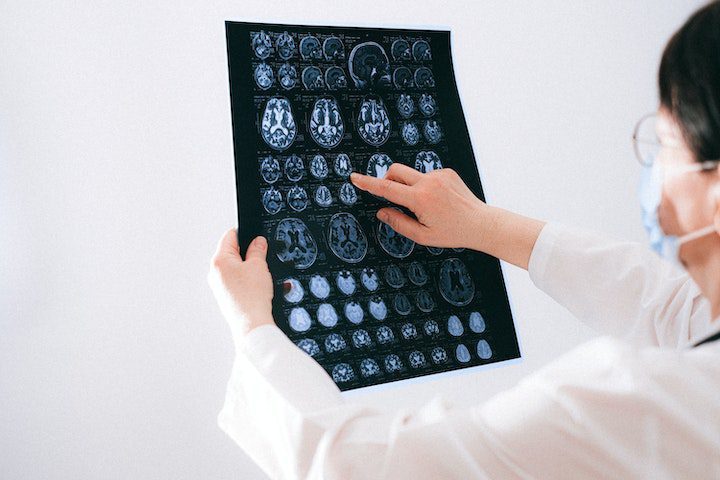 Depression is a mood disorder that affects people in various ways. Effective treatment should be highly individualized to not only investigate possible causes, but also encourage better management and healing. When someone suffers from treatment-resistant depression, a mental health professional might suggest transcranial magnetic stimulation for better results.
Depression is a mood disorder that affects people in various ways. Effective treatment should be highly individualized to not only investigate possible causes, but also encourage better management and healing. When someone suffers from treatment-resistant depression, a mental health professional might suggest transcranial magnetic stimulation for better results.
Why Is Depression Sometimes Hard to Treat?
Mood disorders are often the sum of many parts. The National Network of Depression Centers (NNDC) notes that for Americans between the ages of 15–44, depression is a primary form of disability. This disorder is caused by numerous factors, including:
- Changes in the brain’s biochemistry
- Excessive stress
- Genetic predisposition
- Hormonal fluctuations
- Environmental factors, such as abuse, traumatic events, or complicated grief
- Managing chronic illnesses or dealing with extensive inflammatory issues
One or more of these contributing elements could be the underlying reason for depression. However, without insightful analysis, it’s rare that a first-line treatment—often some type of antidepressant medication—will be wholly effective.
Additionally, there are many types of depression, such as:
- Atypical
- Bipolar disorder
- Disruptive Mood Dysregulation Disorder
- Major depressive disorder
- Persistent depressive disorder
- Post-partum
- Seasonal affective disorder or SAD
- Psychotic
NNDC also points out that approximately two-thirds of individuals with depression “do not actively seek nor receive proper treatment.”
Since symptoms of depression and degree of severity differ for each individual, it’s unlikely a singular treatment method will help someone long term, especially when they’re dealing with more serious conditions. Creating a whole-person approach to successful depression management often includes a multidisciplinary process, including various therapeutic approaches, lifestyle changes, and medication.
Understanding Transcranial Magnetic Stimulation
The use of bioelectricity treatment dates back to the late 1900s, but many health care professionals started using it in earnest in the 1960s to help stimulate weakened or diseased muscle tissue. The Clinical TMS Society reports that scientists implemented transcranial magnetic stimulation in the 1990s, primarily as a treatment approach for depression, but for other diseases as well.
Also known as TMS, rTMS (repeated TMS), and dTMS (deep TMS), this therapy uses an electromagnetic coil device to administer a series of painless magnetic pulses to activate the dorsolateral prefrontal cortex, which is an area of the brain most commonly associated with depression.
Harvard Health indicates that the clinical team first targets the motor cortex of the brain to observe involuntary motor threshold reactions such as finger or hand twitching. This initial evaluation is called mapping and helps the team develop calculations to determine the rate and intensity of the treatment application.
TMS is usually performed as an outpatient procedure by a certified technician, and individuals receive frequent TMS sessions weekly for an extended period of time. They’re upright and awake during each session and often interacting as directed with the clinical team. Patients hear clicking of the device and feel tapping against their forehead. Depending on the advised protocol, sessions are 20–50 minutes long and can vary in scope and intensity at any time based on each person’s response. Changes occur based on:
- Magnet strength
- Magnetic coil type
- Pulse frequency and pattern
Harvard Health states that TMS is non-invasive, as the electromagnetic device operates “completely outside of the body” and the procedure doesn’t involve anesthesia. Some people report having a headache during or after TMS treatment, but otherwise, the treatment is tolerated well by many. Additional minor side effects include:
- Lightheadedness
- Tingling along the face and head
- Slight discomfort at the stimulation site
- Facial muscle spasms
- Scalp discomfort at the site of stimulation
A rare albeit severe side effect is seizures.
Additionally, the procedure isn’t advised for individuals with:
- Uncontrolled mania due to bipolar disorder
- Epilepsy
- Implanted medical aids such as vagus nerve stimulators, stents, pacemakers, and cochlear hearing devices
- Past or current head injuries
- Neurological conditions
TMS also isn’t recommended for women who are pregnant or thinking about becoming pregnant.
How TMS Might Help Depression
To date, mental health professionals are encouraged by the potential of TMS.
- Harvard Health indicates that “approximately 50–60 percent of people with depression who have tried and failed to receive benefit from medications experience a clinically meaningful response with TMS. About one-third of these individuals experience a full remission, meaning that their symptoms go away completely.”
- In January 2023, the American Psychiatric Association shared results from a French study featuring more than 400 participants who “had a diagnosis of either unipolar or bipolar depression and had not responded to at least two trials of antidepressants. Many of these patients had psychiatric or other medical comorbidities.” Each individual received various degrees of treatment. Those “with more severe baseline depression had greater … improvements following rTMS on average, whereas patients with milder depression were more likely to achieve remission.”
- The National Institute on Drug Abuse awarded funding to neuroscientist Travis Baker at Rutgers University to study the effects of TMS on individuals with substance use disorder “not to treat symptoms like drug tolerance, craving and withdrawal but to actually measure and modulate the reward-system circuitry in the brain to affect goal-directed behavior.”
Discover More Resources at Cottonwood Tucson
While our board-certified specialists in Tucson understand the value of cognitive-behavioral therapy, specific issue therapy, and medication, they might advise more innovative treatments for depression such as TMS, EMDR, brainspotting, trauma therapy, and more. Ask a member of our admissions team if this expanded approach is the best next step for you or a loved one. Check out our blogs for more information.







